Awoosh Reports:
Tripping in Asia 2010
Part Three - Tangkoko Jungle Reserve & Ambon Muck Diving
At the end of the last installment of this serial trip report, we had just wrapped up three days of some bodacious critter diving at Lembeh Resort, and it was time to mosey on to Ambon. There we would spend one night at Maluku Dive Resort so we could take in the famous Ambon muck diving, and then board the Archipelago Adventurer II for the main event, a 10 night transition cruise through Raja Ampat, finishing in Sorong.
Our Indo itinerary was worked out by Jim at Uncommon Adventures, favored agent of Saudio, our volunteer group trip organizer. Although I generally try to book our stuff directly with the resort, dive op etc, some of Indonesia is difficult to do from afar – most especially the intra-Indo flights, which are a puzzlement. Several of the Indonesian airlines we have flown still issue (hand-written!) paper tickets and boarding passes – getting an e-ticket is tough – but Jim did manage to get us our Manado to Ambon via Makassar Lion Air e-tickets ahead of our trip. The only tickets we did not have until we got to Indo were the Sorong to Jakarta Express Air legs after the cruise – and they were given to us by the tour driver who took us to Tangkoko Nature Reserve on Sulawesi island – about 12 days before the actual flights. That was a good thing - I like to be able to compile and check the paperwork before departure, so if there are any identifiable problems, there is time to deal with them. All of the arrangements Jim made for us (Lembeh Resort, Tangkoko Nature Reserve excursion, overnight hotel in Manado, flights from Manado to Ambon, Maluku Divers Resort, AA II booking, flights from Sorong to Jakarta, and all driving transfers) went without a hitch, and there were for sure a lot of moving parts to our itinerary.
Tarsier Business in Tangkoko Nature Reserve
Jim suggested that we might like to visit the Tangkoko Nature Reserve on our way back to Manado on Sulawesi. The reserve is about an hour drive from the marina on the Sulawesi side of the Lembeh transfer. I note on Lembeh Resort’s website that they offer afternoon excursions to Tangkoko as well, returning guests to the resort late in the evening. Tangkoko is a generous reserve – a massive virgin jungle, and is home to Tarsiers, Black Macaque monkeys, Hornbill birds, and a kazillion biting and stinging insects. I did not do my due diligence about the jungle visit (my bad), and so did not have the ideal clothing for the experience. More on that shortly.
So, after we and our bags were transferred via tender back to the main island of Sulawesi, we clambered into the small “safari” van that was waiting for us, were handed our air tickets from Sorong to Jakarta by the driver, and we were off. The journey into the reserve is a curvaceous, occasionally white-knuckled kind of affair. The road is narrow and very sinuous, but offers some nice views. I continue to be amazed by the driving methods in Indo – passing on tight, narrow, blind curves seems to be the norm. I wonder if anyone keeps stats with regards to accidents and fatalities, cuz I am betting there are numerous.
Arriving at the entrance to the park in the mid-afternoon, we spotted a small Indonesian fellow sitting on a log, biding his time. Our driver advised that he was our guide, and that we should put on long pants and closed shoes, and apply bug spray to any exposed parts. I only had a pair of warm black tights, and my ugly Uggs that offered that kind of cover - I wore them for our flight from home, and in Beijing, as it was very cold there. I did not have jeans or runners or anything similar that I could layer on. I did have a lightweight, loose fitting, long-sleeved top, which kept most of the bugs at bay, except for the few that adventured down my neck or up my sleeves. And thank the dive gods I had packed some OFF Deet – without it we would have been eaten alive.
There was a loo at the gatehouse, which was typically Indo basic (read: yucky), but as good a place as any to cop a squat before trekking into the forest. You would not want to bare your bits to the carnivorous insects in there.
So the little man beckoned, and off we traipsed into the jungle. There is a network of small footpaths to follow, none of them signed, so I would imagine it would be quite easy to get turned around in the forest, which is oppressive with huge trees and undergrowth and sound. It is hard to translate the noise of the jungle – the constant whirring and buzzing of insects and varied bird calls really was cacophonous.
Our guide, who appeared to have about a dozen words of English in his repertoire, would occasionally signal to us to stop and wait, and then he would disappear into the jungle for a few minutes, leaving us alone to be assaulted by narsty little biting ants that climbed our legs when we stopped moving. The first time he reappeared, he had a handful of grasshoppers, with which he mimed eating while saying “food, food”. We weren’t at that point clear who or what exactly the food was for, but we watched him stuff the bugs in his shirt pocket and off we went. It had to be 90 degrees in that jungle, with outrageous humidity. And this little guy liked to cruise along at quite a clip, so in no time at all I was sweating like a Bikram yogi and my glasses were completely fogged and useless. It did not help that I was wearing fur-lined suede boots ;^)
 |
We stopped occasionally to take pictures of the some of the many incredible trees, which he said were Banyan when we asked – they didn’t look much like the Banyan trees that we had seen in places like Hawaii, but they were big, and they were old, and they were very beautiful, with their massive roots running out over the surface long distances into the jungle.
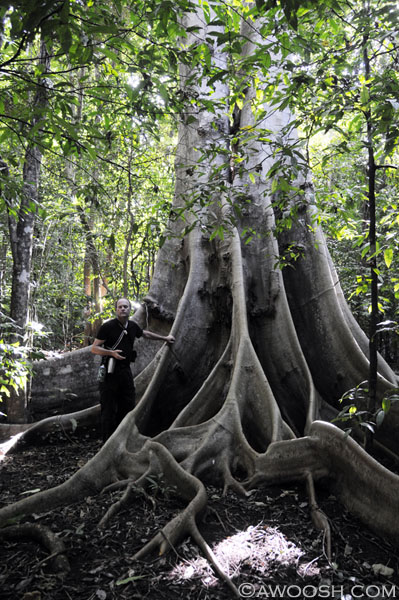 |
Every now and then, the guide would gesture for us to be still and quiet, and then he would scoot off into the jungle again, looking for birds or monkeys or grasshoppers or whatever. On one occasion he returned from a foray and gestured for us to follow him. Pointing up he said something like “honebee” – which translated into Hornbill. The hornbill is a big beaky bird, and I could not really do it justice shooting up in the canopy with my 18-200mm lens, but I have this evidence that we saw one:
 |
And then we were off again, steaming through the jungle, in pursuit of the little man on a mission. He stopped at a beautiful tree that had a large hollow in the base of its trunk. “Monkee here” the little man said, and then he leaned a stick against the trunk of the tree and perched a grasshopper atop of it. Sure enough a little Tarsier, about the size of a man’s hand, scooted down in the darkness of the hollow. He perched a while, and then darted out to grab the sacrificial grasshopper. Tarsiers are the smallest of all the simians, and looked to me to be more like a big mouse than a monkey.
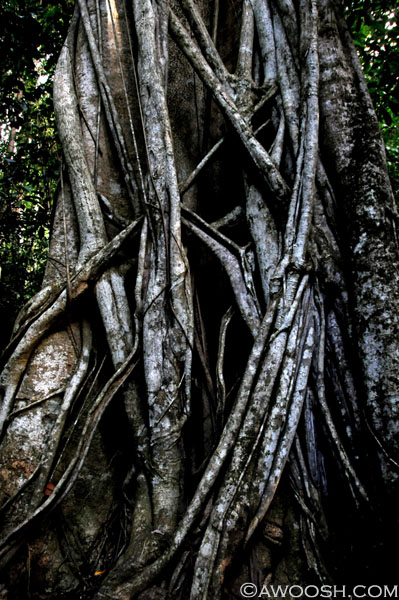 |
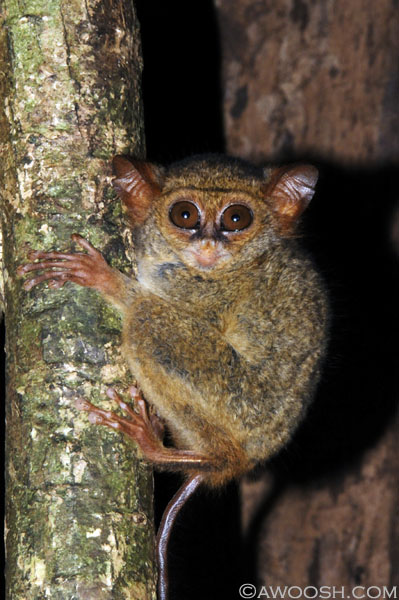 |
We stayed for a while to watch the little guy, who was wary of us, but not so afraid that he hoofed it back up the tree. Tarsiers are nocturnal – hence the big eyes for night vision. Their preferred diet is bugs, and they are in no short supply in Tangkoko jungle.
And then we were off, again, winding through the forest, looking for Macaques – the final of three prizes to see. The Macaques at Tangkoko are black, as opposed to the silvery brown ones we had seen in the Monkey Forest in Ubud, Bali, and by the side of the road on Sumbawa island. And we never did see one – but not for lack of trying. As the day faded into twilight, we wound our way out of the jungle and back to the van. We were walking for close to three hours, and we were sweaty, tired and thirsty.
Back on the road, our driver pointed the van towards Manado, where we would spend the night before flying out to Ambon very early the next morning. It was a two hour, honky, hairy ride with a quick, surreal stop for a chicken and water spinach supper at a huge restaurant, where we were the only patrons.
In Manado, we were dropped at the Sintesa Peninsula Hotel, a modern, high-rise structure about a 20 minute drive from Manado Airport. We had an early start – up at 4 to be picked up at 4.30 for a 6.30 a.m. flight departure. Standing on the curb, waiting for a driver to pick us up as the local muezzin called faithful Muslims to worship over (very loud) loudspeakers in the dark night before dawn? You feel a very long way from home.
Our flights on Lion Air to Ambon, via Makassar went smoothly. Our checked bags were overweight (in fact, we had an extra checked bag on top of the usual one bag per person allowance as we had to bring warm clothes for our side trip to Beijing), but when we mentioned it was dive gear, we were not charged an overage. Nice. A delightful Canadian we met at Lembeh Resort, who has been living in Indonesia (mostly Sorong) for several years as a conservation adviser, told us that if you mention to Indonesian airline agents that your overages are due to dive gear, you will not be charged, or at the least, be given a 10 kg pardon. The only time we got dinged (and it was bigtime) was exiting Sorong on Express Air. In that case we were checked in by a crew member from the boat, and so had no opportunity to bargain with the agents. I suspect Express Air does not play ball on the dive gear allowance anyway – it is a super budget scareline that I will avoid at all costs on any future trips in Indonesia.
Makassar, on southern Sulawesi island, is one of the main hubs of Indonesian airlines. Makassar has got itself a modern new airport since our last transit through there, two years ago – it is a huge improvement over the previous, non-air conditioned boondoggle. The new airport is a light, airy structure where there are numerous little cafes and eateries, some shops, and business lounges where, for a nominal fee, you can get into a smoke-free environment, with snacks and beverages on the house.
Maluku Divers Resort on Ambon Island
Maluku Divers Resort on Ambon has been moved from its previous, more basic digs that required a significant car commute from the airport to a brand new development that is only about a ten minute drive from Ambon airport. On its doorstep are some of the sites which make Ambon famous for muck diving, and the house reef ain’t all bad either.
Unfortunately, your humble reporter can not give a glowing review for this resort. In our experience, it was still under construction when we visited and was (imo) very expensive for what was offered, in comparison to places like Lembeh Resort and Scuba Seraya on Bali. It has promise, but has a ways to go before it is worthy of the hefty, US$250 per night, per person, package rate (meals, accommodations, three tanks daily – and that price based on double occupancy). I did not take any pictures of the resort, but I believe Jamie (Peaches) did, and perhaps she will share them. The others who stayed there may also have further feedback about Maluku Dive Resort – ours really was a whirlwind visit – just one night and three dives.
Our bungalow (I think it was #7) still had unfinished concrete floors throughout, unfinished wood desks and sink counter, no floor moldings, and the French door entry had a wide, bug-inviting, air conditioning challenging gap between the doors, and no way of locking the unit. There is no dock (yet – hopefully they’ve got one in the development plan), and the shore is rubbly and steeply banked, so getting down to the water to climb on to the dive boat or do shore dive was a bit of an adventure, especially as I had not brought booties on the trip. The food was okay – not memorable, but the fine company more than made up for any deficiencies of the resort.
We arrived mid-afternoon, just in time to see the dive boat peel out with our buddies on board. When we mentioned to Marcel, the resident manager, that we would like to get in a dive that day, he said we could take ourselves on an unguided shore dive, out in front of the resort. We decided to wait for the group to come back, to see if any of them wanted to join us, and spent some time unpacking, assembling camera gear and getting the dive gear ready to roll.
It was a happy reunion when the boat returned, and we could give hugs to our soggy buds Peaches & Robbie, Gunard, Pismodiver, Sppplash, Kiddoc & Amy and Robert H, who had all arrived at least a day before us to dive the Ambon muck. Gunard, Kiddoc, Sppplash & Robert took us up on our invite to do a night shore dive, and in we went. It was a mellow, shallow kind of night dive, and it coughed up some cool stuff:
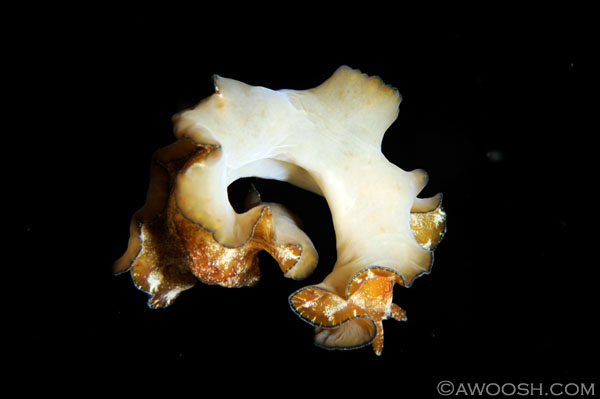 |
 |
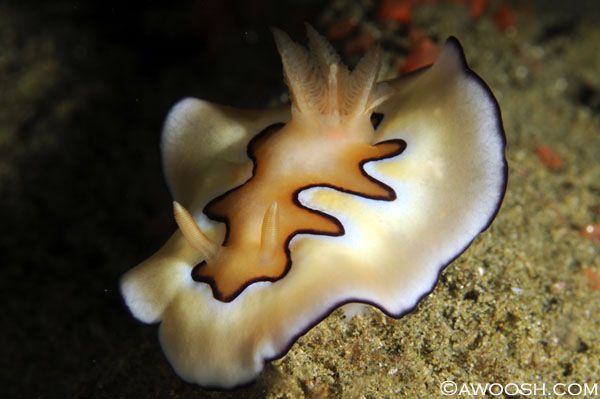 |
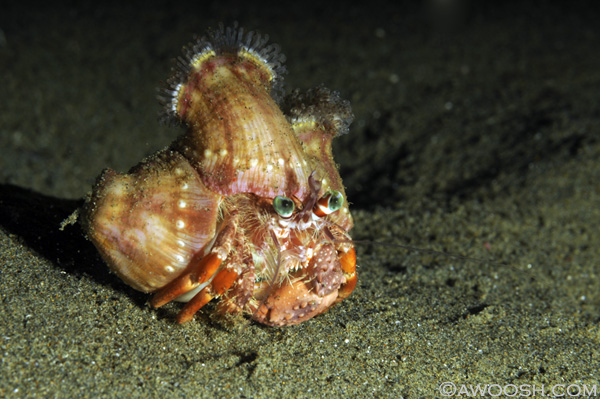 |
The next morning, we did two boat dives with Maluku Divers Resort, led by Lily, their very personable dive guide.
And, need I say, Laha never sucks ;^):
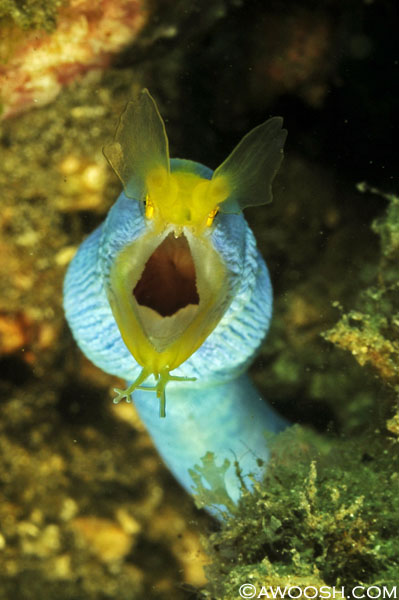 |
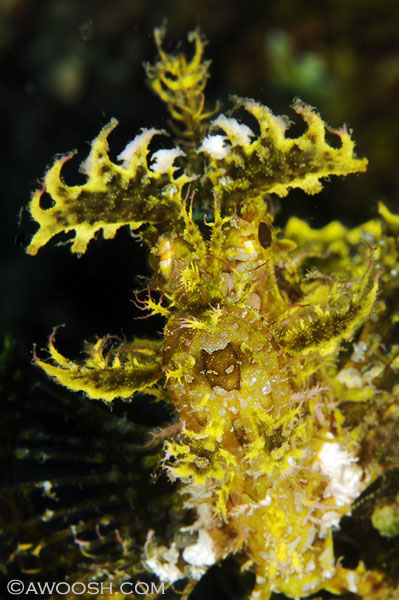 |
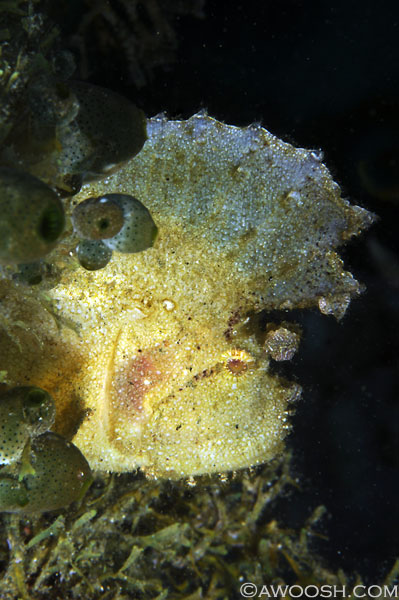 |
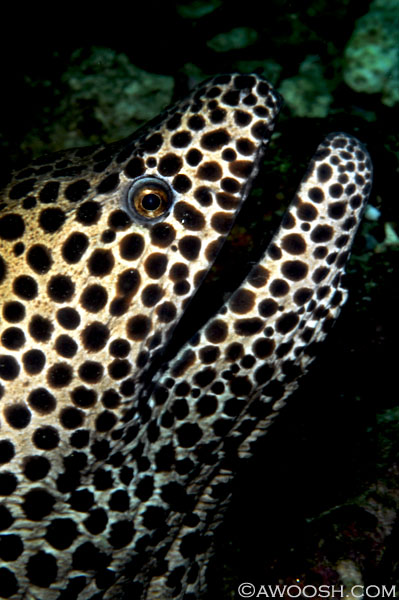 |
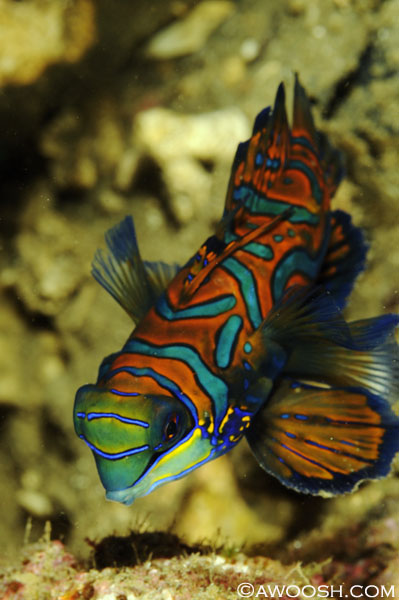 |
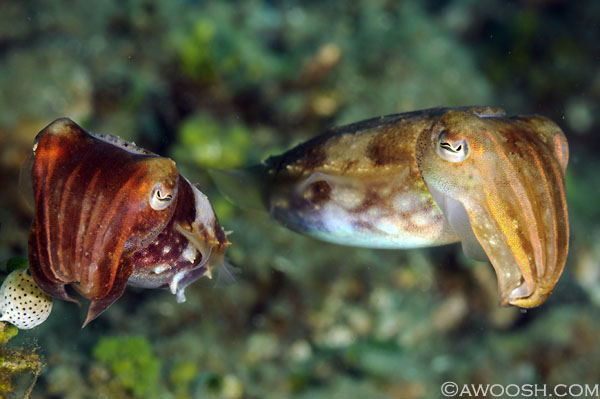 |
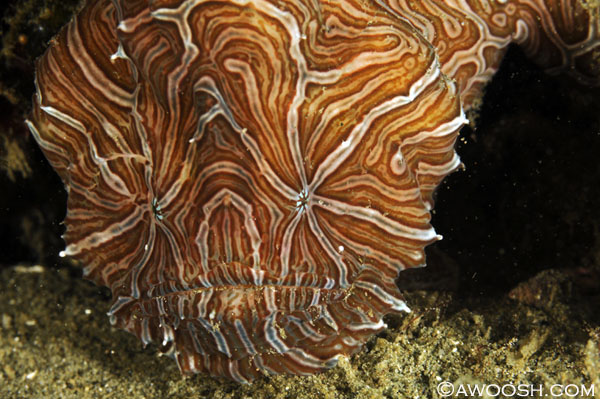 |
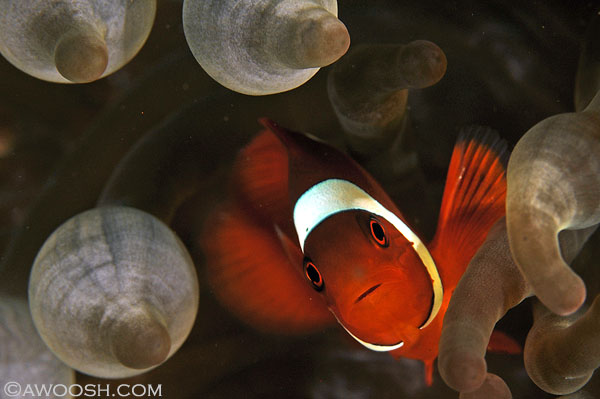 |
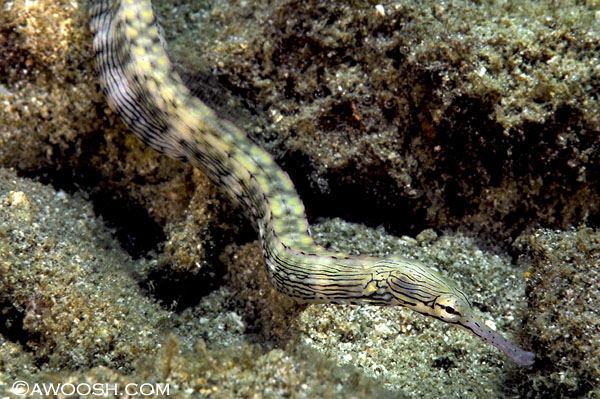 |
While we were out diving, all of our bags were transferred by tender to the Archipelago Adventurer II, which was anchored a short distance from the resort. After our second dive, we too were transferred to the boat. And then there were more happy reunions (Doc V, Macho, Bill M, Steve W) and a few introductions (Tel52 & Kriss & Valerie W). And last, but not least, to arrive was Saudio. Many of the crew remained from our last outing in 2008, including the irrepressible Made, whose giggle is the stuff of local legend.
AA II offered those of us who arrived early enough an afternoon dive in Ambon Harbor. Immediately following, the boat would push off for our transition cruise to Raja Ampat. I hate muck diving in Ambon. Not :^) The visibility was much better than on our trip two years ago, but sadly, there is still a blizzard of plastic garbage bags blowing by and much detritus strewn on the sites – but the crazy critters make up for the less than beautiful surroundings:
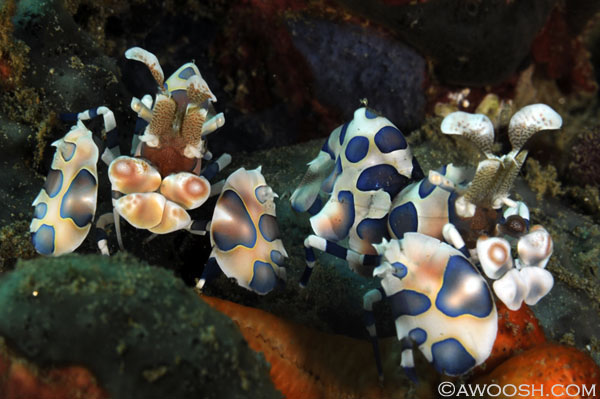 |
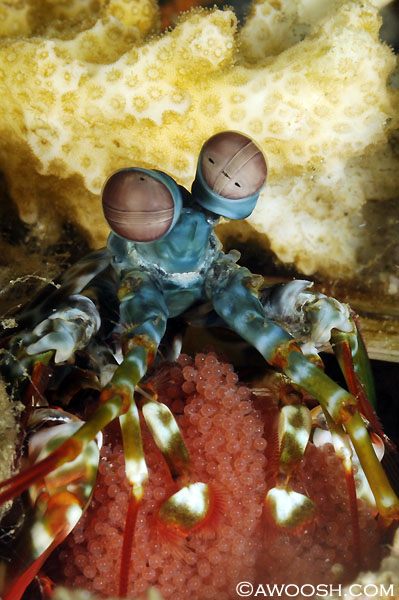 |
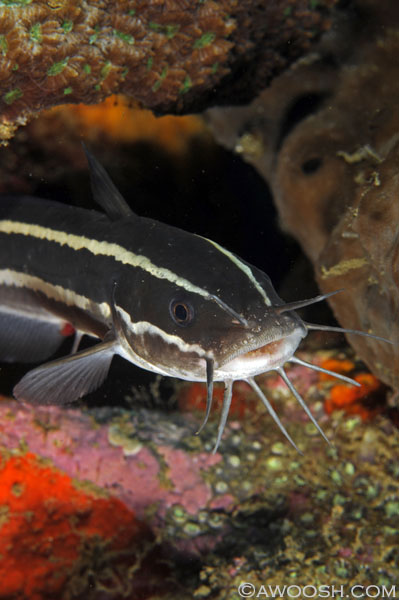 |
 |
Final Chapter - Raja Ampat on the Archipelago Adventurer II.
Trip Slideshow
Trip Galleries
Part One - Beijing, China
Part Two - Lembeh, Indonesia
Part Three - Ambon, Indonesia
Part Four - Raja Ampat, Indonesia